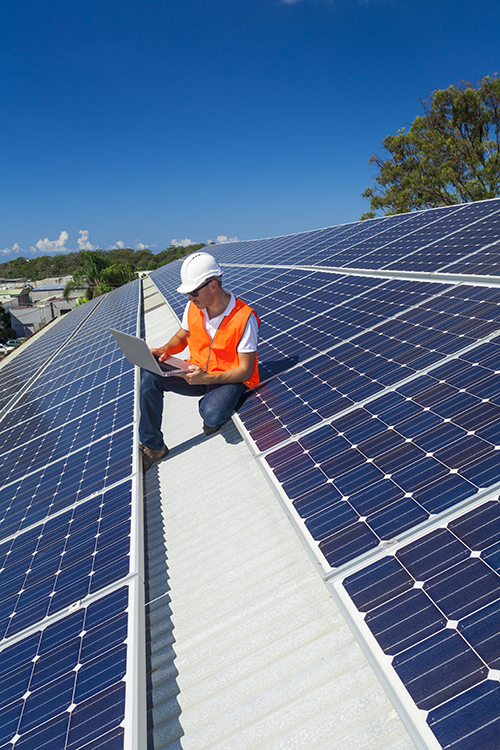Solar photovoltaic technology
Solar photovoltaic devices (PV) consist of a dense array of semiconductor diodes that can convert the energy of sunlight over a wide frequency range to electric current (Demirel 2012). When photons or particles of solar energy strike a PV panel one of three things may happen. They might be reflected or pass right through the panel or possibly be absorbed by the panel. Those photons that are absorbed by the panel transfer their energy to the semi-conductor material (i.e. silicon). This new energy changes the balanced state and induces movement in the electrons of the atoms that make up the panel material. Some of these electrons are shaken loose and directed to an outgoing conductor by electric fields. The resulting flow of electrons is direct current (DC) of the same type that comes out of a battery (Janardhan and Fesmire 2011). Energy is captured direct from sunlight and no moving parts or fuel are required other than a constant stream of photons.
It is possible to extract 10-20% of the incident energy (much better than the 6% that plants convert to stored energy in the form of biomass) (Janardhan and Fesmire 2011). It is anticipated that with future breakthroughs in material development, the efficiency of commercial systems will shortly rise to 30%. Physical laws mean that photovoltaic systems will at best achieve 60% efficiency with concentrating mirrors and lenses and 45% efficiency without concentration techniques (MacKay 2009). In 2008 the US Department of Energy’s National Renewable Energy Laboratory achieved solar cell efficiency of 40.8% and more recently in 2014 this efficiency reached 46% in a solar cell developed by a French-German collaboration (Reneweconomy 2014).
PV systems have been very expensive and quite uneconomic to install in places with a limited amount of direct sunlight like the UK. However, in recent years the price of PV installations has reduced significantly. In the UK this has fallen to just £1.07/W in a recent 34MW development in the East Midlands (2013). Home-based solar panel arrays cost more.
